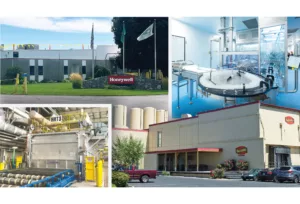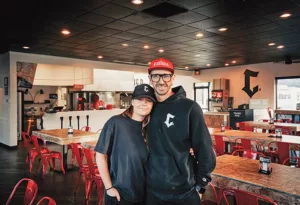
Home » ValleyÂ’s zoning plan draws fire
ValleyÂ’s zoning plan draws fire
Part of planned Sprague-Appleway revitalization would include ‘downzoning’
February 26, 1997
While the question of whether to convert Spokane Valleys busy Sprague-Appleway couplet to two-way streets has become a headline debate, a less well-known part of the citys broad rejuvenation proposal for that corridor is drawing sharp criticism from the development community.
The proposal, called the Sprague/Appleway Revitalization Plan, includes dramatic changes in how land along the corridor could be used in the future, and some developers and land-use experts charge that those changes amount to downzoning, or taking away land-use rights that exist today.
They dont know what damage theyre going to do, says Spokane developer Marshall Clark, who owns property along the corridor. Todays best uses wont be allowed under their new plan.
The plan, says longtime Spokane land-use consultant Dwight Hume, is all very questionable in terms of how the market would respond. Youre not going to have the tax revenue you thought youd have. Businesses are going to go away, Hume says.
Adds Spokane land-use attorney Stacy Bjordahl, It would tend to drive development out of the plan area.
Spokane Valley City Councilman Dick Denenny responds that the corridor is deteriorating, and that if nothing is done to guide future development there, it will continue to decline.
If youre not satisfied with the corridor as it is now, where do we go from here? Denenny asks.
That sentiment is echoed by Scott Kuhta, the citys project manager for the revitalization plan. Kuhta contends that the corridor is too long to support strip-like commercial development along its entire length and so by focusing commercial development into specific centers along the corridor and reducing retail entitlements everywhere else, the corridor will improve overall.
Still, says Denenny, the city is very willing to listen to the development communitys concerns about the proposal and to modify the plan so it achieves the revitalization everybody wants.
Also, not all business interests are critical of the plan. The Greater Spokane Valley Chamber of Commerce assigned a task force to study the proposal, and that task force recommended the chamber support the plan as an important step forward to develop Spokane Valley as a vibrant city.
Spokane Valleys plan for revitalizing the six-mile-long corridor includes roadway changes that include the possible conversion of the couplet and an extension of Appleway Boulevard, establishing a city center near University Road, and creating district zones where land-use rules would mold how the corridor will evolve. Those six district zones include:
A City Center zone that would be bounded roughly by Walnut and Bowdish roads and Main and Fourth Avenues, centered on the Sprague-University intersection. There, the city would like to create a core of entertainment, shopping, and dining, along with civic and government buildings and some urban housing.
Five Neighborhood Center zones, at Spragues intersections with Mullan, Pines, McDonald, Evergreen, and Sullivan roads. These zones would be intended to include supermarkets and other neighborhood retail shops, banks, health spas, and the like, plus some office and other compatible mixed-use structures.
Gateway Commercial Avenue, which would include both sides of Sprague and the north side of Appleway from Thierman to Argonne, and which would be intended as a themed district dominated by automobile sales and service.
Two Gateway Commercial Centers, one near the Interstate 90-Sprague interchange and one just west of Vista Road. These centers would include auto-themed restaurants and entertainment intended to support the Gateway Commercial Avenue district.
Mixed-Use Avenue, which would include the portions of Sprague not included in other zones, and would include medium box retail but also a mix of office, lodging, and medium-density housing.
Residential Boulevard, which would include scattered properties generally south of Appleway, and would create a residential corridor of medium-density and single-family housing.
The city began working on the plan more than two years ago, and hired a collection of consultants, headed by San Francisco-based Freedman Tung & Bottomley to study the corridor and recommend ways to revitalize it. The city has held a series of public hearings on the matter and the citys planning department has proposed land-use rules and other actions based on those recommendations. The City Council now must decide whether to approve some or all of the plan, a process Denenny says could take a number of months.
Were not under the gun, he says. We have the latitude to deliberate, and make sure we do this right.
Fed up with city
Clark, a developer and commercial real estate agent here, says hes fed up with the city of Spokane Valley and now plans to sell land he owns near Sprague and Bowdish.
I wont do property out there until they get their stuff together, he says. Theyre picking the absolutely worst time to be turkeys, he adds, referring to the soft economy.
Clarks property there, which currently is occupied by a pawn shop, is zoned for most commercial uses, and he had recently drawn up plans to convert the property for a bank. Now, however, Clark says hes been told by city officials that a bank wouldnt be permitted under the new zoning code, nor, he says, would other prime uses for the property that currently are allowed.
Theyre removing the most popular uses for that property, Clark says, adding, The property is going to be worth less than it is now.
Clark says he represents other property in the corridor as well, and says hes convinced that if the plan is adopted as written, developers and builders will avoid projects in the area and property owners will sell their land rather than be handcuffed by more restrictive zoning.
This would cause greater vacancy. It would cause (tax) revenues to decline. They were sold on a song by a California consultant, he says.
Clark adds, I know their intentions are good, but nobody thats in there now is going to be re-elected if they go through with this.
He asserts that the city hasnt been honest about the plan because it hasnt come out and said that properties along the corridor would be downzoned if the plan is adopted.
Kuhta says the city has done more than the law requires in terms of notifying property owners of a broad reclassification of zoning along the corridor, but acknowledges the frustration of owners who seem surprised by the proposed actions.
Were getting criticism, and well accept that criticism, for not providing enough info to individual parcel owners about possible changes to their pieces of property, he says, but adds that doing so would have been expensive and time consuming.
Another recurring complaint among developers and landowners, some of whom asked not to be quoted for this story, was that the revitalization plan tries to do too much or is too far reaching.
The best way to do this is to test it, says Hume. Put in the part relating to the city core and prove that the concept works.
Says Bjordahl, Certainly for myself and the people I represent, we support the city having a city center, but theyve gone way beyond that scope, to redesign that entire corridor. She adds, They need to scale back the geographic area of the plan.
Both Denneny and Kuhta say theyve heard that complaint loud and clear.
As were going forward, says Denenny, were going to look at the scope and breadth of what were doing and ask ourselves, what can we do to achieve the end goal without going to the full scope of what were planning.
Says Kuhta, If its too much, too fast, well talk about that with the council. This is not adopted yet.
Another complaint leveled by developers and others is that the proposed zoning code forces new structures out near the street, rather than set back on a property, with parking lots out front. Thats the case in some, but not all, district zones.
There also are concerns from the development community about how complex the proposed code is and that there are inconsistencies that could lead to litigation if the code is approved as written.
Kuhta says its normal that a comprehensive zoning code would require fine tuning before its implemented, and that the city is listening to suggestions from those in the industry. This is a cutting-edge code, he says.
Hume says hes been assured that some problems hes brought up with city officials will be addressed in the code before its adopted, but worries that city officials dont seem to believe some of what theyre being told by those in the industry.
Im hoping some common sense will be used on this, says Hume.
Contact Paul Read at (509) 344-1262 or via e-mail at [email protected].
Latest News
Related Articles


_web.webp?t=1764835652)
